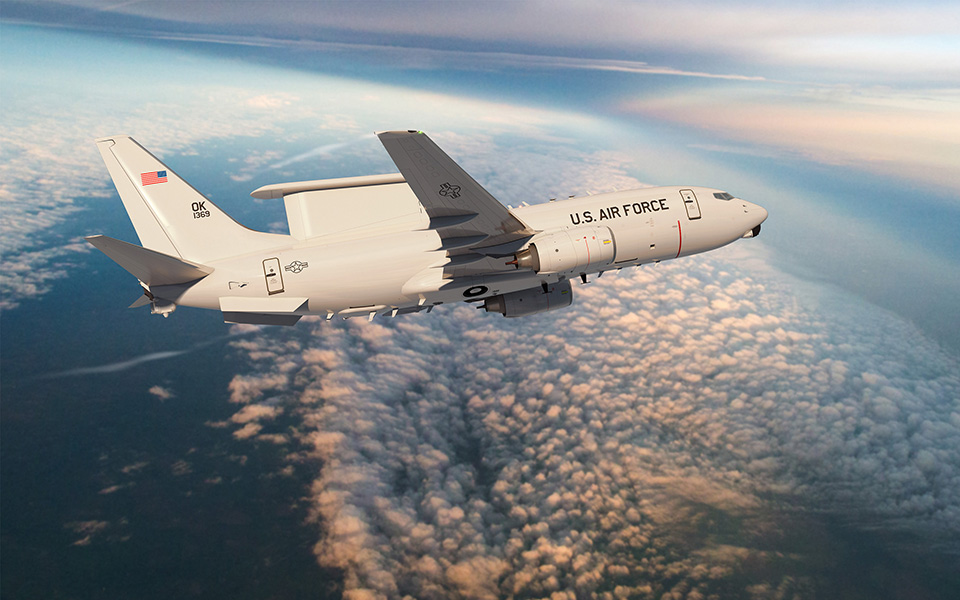
On June 11, the Senate Appropriations Committee questioned Secretary of Defense Pete Hegseth, Chairman of the Joint Chiefs of Staff U.S. Air Force Gen. John Caine, and Bryn Woollacott MacDonnell, Special Assistant to the Secretary of Defense and currently performing the duties of the Under Secretary of Defense (Comptroller) and the Pentagon’s Chief Financial Officer.
During the discussion, the matter of airborne early warning became a key topic as senators investigated how the USAF plans to deal with the rapidly worsening material state of the E-3 fleet. In 2023, the USAF initiated what was supposed to be an “accelerated” procurement for up to 26 E-7 to replace the remaining 16 E-3s. Difficulties started early as the USAF pushed for a long list of upgrades to be incorporated into the new aircraft in comparison to the ones in service in Australia or even currently in production for the UK’s Royal Air Force. It was only in August 2024 that a contract was definitized, covering the production of 2 E-7A “rapid prototypes” for over 2.5 billion dollars.
The rapid prototyping program is meant to “integrate US-based mission systems” while simultaneously ensuring interoperability with coalition partners already operating the E-7. The 2 prototypes would be “operationally representative” and were meant to be delivered in FY 2028, to be part of the final frontline fleet to be built up subsequently.
The early list of modifications requested was not enough and it was just last April that the USAF published a Request for Information for “advanced” upgrades involving, potentially, a whole new radar.
Regardless of the eventual decisions to follow the answers to the RFI, the General Audit Office has now reported that the E-7 project is not in good health, with first flight already pushed back by 9 months, into 2027, and with program cost estimates already revised upwards by 33%.
This will no doubt have played a part in Secretary Hegseth’s push to cancel the project in favour of use of Space Based assets for tracking moving targets in the air, but the US Air Force insists that space-based solutions alone are not sufficient, nor mature enough to replace the E-3 on their own.
Asked about what the current thinking is, Bryn MacDonnell revealed that the FY 2026 budget, currently being crafted, includes 150 million in funding for a “joint expeditionary E-2D unit with 5 dedicated E-2Ds, and the budget also funds for additional E-2Ds to fill the near-term gap at $1.4 billion”.
In practice, the USAF would acquire a number of E-2D HAWKEYES, used for AEW aboard the US Navy’s aircraft carriers, as a stopgap on the way to a satellite-delivered capability. This would seem to be a partial “victory” of the USAF in the discussion, because the inclusion of a stopgap solution implies the highest levels of the Pentagon have accepted that satellites are not yet in a position to replace the E-3.
It is safe to say that the USAF hopes that this partial victory will lead to Congress stepping in to prevent the cancellation of the E-7 project, on the basis of the non-insignificant technical issues that would come with an E-2D solution.
The E-2D is smaller and has a shorter range than both E-3 and E-7. It carries fewer operators, reducing its ability to act as a flying command post in vast and complex scenarios. It also flies lower and has inevitably a smaller radar range, despite being technologically modern and up to date.
The E-2D has recently gained a probe enabling refuelling in flight, but is not compatible with the USAF favoured Boom solution. It needs a drogue, ideally at the centreline station, which KC-46 has but that is harder to provide via KC-135, where it can be fitted as an extension to the boom.
In general, an E-2D solution for the USAF is sub-optimal in many ways. It makes sense as a stopgap measure supposed to “last” a relatively short time, as it can “ride” on a well established US Navy fleet and an active production program, but it’s safe to say that the USAF still hopes E-7 can be rescued.
The first draft of the USAF’s FY 2026 budget request still calls for 200 million for E-7A, a reduction of nearly a third, compared to the 297 that had been projected last year.
More importantly, the House Appropriations Committee has already communicated that their version of the budget would include 500 million in support of E-7A. Congress, in other words, could still very well keep E-7 going, re-allocating the money for the E-2 stopgap and adding more.
The first prototype E-7A is being assembled: the fuselage was mated to its wings about 2 months ago, while the tail was installed 3 weeks ago.








.png)
